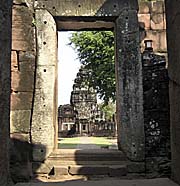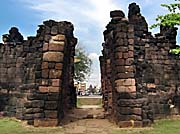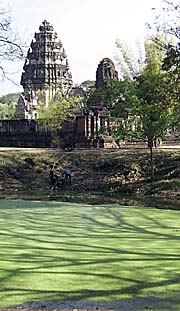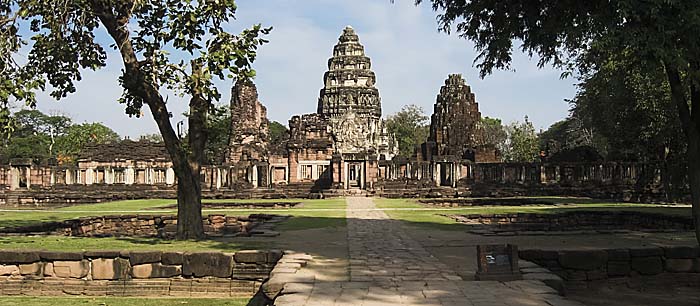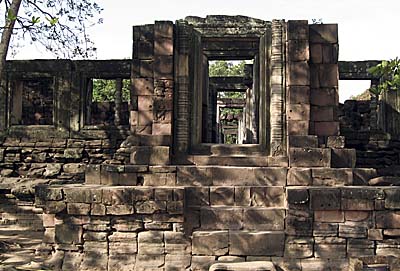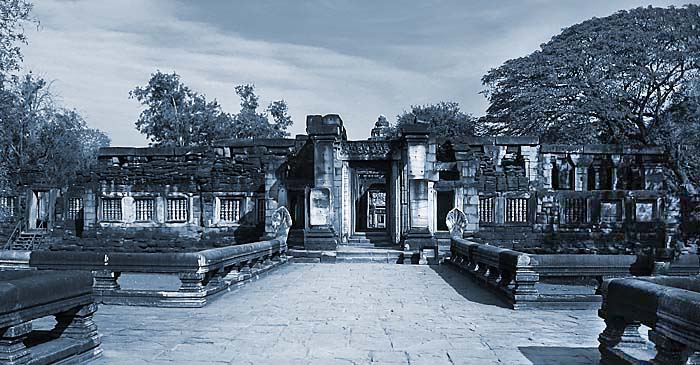1.
Phimai Historical Park
In the heart of Phimai, a small town in Thailand's northeastern Isan region, one of the most remarkable Angkorean cultural heritages outside Angkor itself is situated: Prasat Phimai. In 1936 it was set under protection by the Thai government and became step by step restaurated from the 1950s on. 'Phimai Historical Park' was opened in 1989.
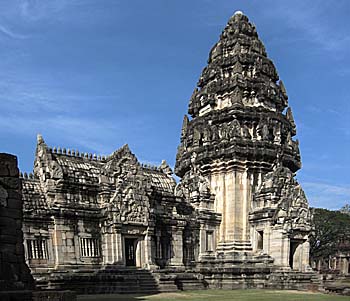
The main tower (prang) of the inner sanctuary of Phimai. Image by Asienreisender, 2010
Phimai town is a medieval Khmer foundation, became the first time fortificated in the 11th century and advanced to a spiritual center of the classical empire of Angkor. In the reign of king Jayavarman VII (1181-1206/1220 CE) the city walls and gates so far they remain now were constructed. The town's name is derivated fro 'Vimayapura' or 'Vimai'. The contemporary official name of the site is 'Prasat Hin Phi Mai'.
Historical Phimai has a considerable size. The inner temple district is a rectangular of 83m to 74m, the middle district measures 272m to 220m and the surrounding town, which was formerly completely enclosed by the city wall, stretches over 665m to 1033m. Phimai must have been one of the most important cities in the Angkorean empire.
The central temple complex is not exactly aligned onto the north-south axis, but by 20 degree turned to southeast. It's probably done to give it the direction facing to Angkor.
At the northern end of Phimai is a national museum placed, which displays a number of the site's artefacts as lintels, Buddha images, nagas, pottery and jewellery.
Prasat Phimai is considered to be the most important Khmer monument in Thailand.
Map of Phimai
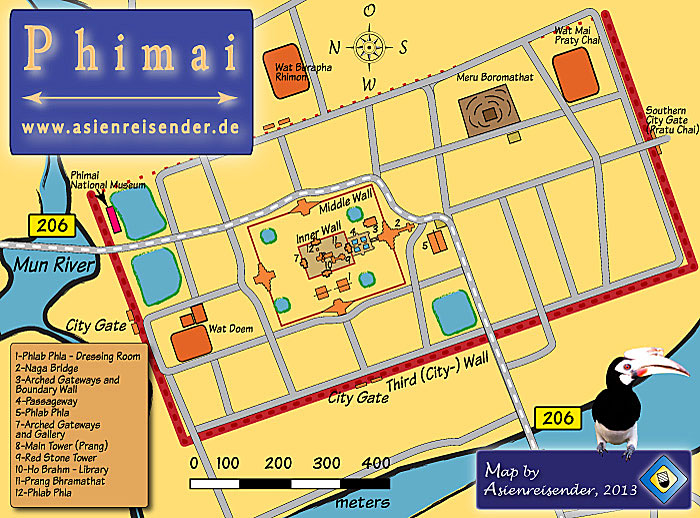
Phimai is a particularly inviting Thai town for it's marvellous combination of a lively place in combination with a great historical site. Few tourists or travellers take their time to study the place for a few days, although it offers a friendly atmosphere in a spot where is much to do. Besides the main site various Thai temples are to visit in Phimai, three markets offer opportunities to buy food and other supplies, there is the Mun River to have walks along it's banks and a 350 years old huge Banyan tree not far east of town. The surrounding is coined by rice paddies showing traditional Thai life style and there are other archeological sites not far around. Accommodation and individual transport (bicycles and motorbikes) are easy to organize.
